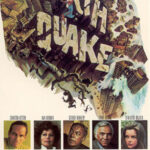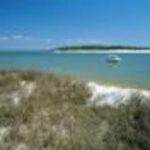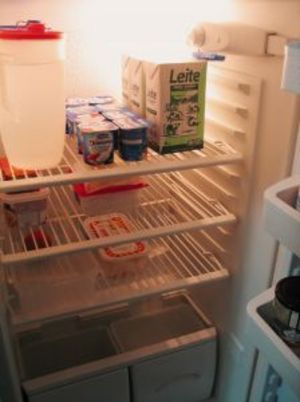The Eastland was docked 20 feet from shore, riding high on 20 feet of water. When it rolled over, 844 people died — within five minutes.
There had been problems with the Eastland ever since she was built. She rode too high in the water, for one thing, and she had a tendency to list to the port. A series of modifications had been made to the ship, each change making her more and more dangerous.
The Eastland was built for a specific purpose. She had been commissioned by the Michigan Steamship Company to the Jenks Ship Building Company in 1902. The goal was a ship that could navigate between South Haven, Michigan, and Chicago, Illinois, taking passengers and fresh produce. The ship would be scheduled primarily for overnight trips from South Haven, so the ship required a large number of sleeping cabins for the comfort of the passengers. Speed was also required, to deliver the fresh fruit from Michigan in prime condition.
The location of South Haven produced a particular challenge to the shipbuilders. About a mile and quarter from the port there lay a sandbar, usually about 12 to 13 feet underwater. The ship would need a low draft when leaving South Haven, but additional ballast once the voyage was underway. The problem was solved with an adjustable water ballast system, in which water could be let in or out as the need required.
The Eastland took its first runs in 1903 and the owners were not satisfied with the results. It didn’t have the speed they had been promised, and the ship had damaged her blades several times on the South Haven sandbar.
The ship was returned to the builders for modifications. They rearranged the machinery on board to accommodate a better draft. A ventilation system was added for the comfort of the customers. Changes were made to provide for better speed. The alterations met all the owners’ requirements, but they had additional consequences: they made the ship considerably heavier, and relocated her center of gravity much higher than it had been before.
The first incidence demonstrating the Eastland’s instability occurred in 1904. A shipload of about 3,000 passengers — with about 1,200 of them congregating on the hurricane deck — began to list about 12 to 15 degrees to the port. The water ballast was adjusted. She then began to list to the starboard, about 20 to 25 degrees. At this point, water started coming in through the gangways, and the decks were flooded with about a foot of water. The crew rearranged the passengers, adjusted the ballasts again, and continued on their way.
In the 1904-1905 season, more changes were made. The ship was making fewer nighttime passages, so some of the below-deck cabins were removed. More lifeboats were added. More weight, in other words, all of it above-deck.
The following year, the Eastland was sold, to a firm in Cleveland who used it for excursions between Cleveland and Cedar Point, which, even then, was a popular resort and amusement park. A calliope was added. Night dance cruises were exceedingly popular. There were no overnight trips now, so the rest of the cabins were removed.
The ship was sold again in 1914, to the St. Joseph-Chicago Steamship Company. Once again the Eastland found herself back in Lake Michigan, carrying passengers on excursions between St. Joseph and Chicago.
After the Titanic sunk in 1912, the public began to demand better safety regulations on ships of all kinds. The 1915 Seaman’s Act was signed by President Wilson in March of that year, to take effect in November. In June, when the Eastland was in for repairs, the owners decided to get a jump on the regulation and installed six more lifeboats — which contributed to make the ship even more top-heavy. Once the Act went into effect, the ship would have been limited to carrying 1,200 passengers, but it was not yet November, so the Eastland could carry its current legal limit of 2,500.
During the same batch of repairs, adjustments were also made that rearranged some of the compartments for increased efficiency, and two inches of concrete was added between the wooden decks, to keep them from rotting.
This brings us to the morning of July 24, 1915. The Eastland, along with five other ships — the Theodore Roosevelt, the Petoskey, the Maywood, the Rochester, and the Racine — had been chartered by the Western Electric Company for a company picnic. The Eastland and the Roosevelt were the newest of the ships, and the most luxurious. They were also the first scheduled to depart. Since assignments to particular ships had not been made, most of the passengers preferred to travel on one of them, and had arrived at the dock early.
The employees of Western Electric were predominately immigrants or first-generation Americans of German, Czech, or Bohemian descent. They had neither the time nor the money for excursions on their own, and the trip was an eagerly anticipated event. At 6:30 am, the ship began boarding. The day was pleasant, but slightly chilly in the early morning, and many passengers went below decks to get warm before departing.
Boarding took place on the starboard side. Immediately, the ship began to list toward the wharf, an expected occurrence with so many loading at once, and not yet dispersed throughout the ship. The port ballast tanks were filled, and the ship leveled off.
About 20 minutes later, the ship began to list to the port side. The starboard tanks were filled and the ship evened out again. By the time all the passengers had embarked, the list was to the port again, this time more severely. Water began coming in through the gangways. The passengers were amused by all the swerving and swaying.
At this point, a canoe race could be seen in progress off the port side of the ship. There was a rush to that side to see what was going on.
At 7:28, the Eastland swung sharply to the port, and continued to roll all the way over to its side. The river bottom was only 20 feet below, and it came to a rest there. The passengers that were below decks were trapped, to be drowned by the river water, or crushed by heavy furniture, or both. Above decks, some jumped into the water from the port side, only to be crushed by the ship when she rolled. Some managed to crawl out onto the starboard side of the hull, where they were rescued. Others were thrown into the river.
Other boats in the area and onlookers on the shore did all they could to save as many as possible. Despite their efforts, 844 people — 841 passengers, 2 crewmen, and one would-be rescuer — were lost.
Bodies were taken to a number of makeshift morgues, the chief of which was a cold storage warehouse. (Today, that building houses Harpo Studios, home of The Oprah Winfrey Show. The Studio is now said to be visited by a ghost, the “Gray Lady.”) Identification was a significant problem. Since there had been no assigned ships, there were no passenger lists, so no one really knew who had gone on the trip. Many whole families had gone on the excursion, leaving no one behind to identify them. Two days later, the Western Electric Company reopened for business — in part so that management could determine who was missing.
Sources: Chase’s Calendar of Events, 2011 Edition: The Ultimate Go-To Guide for Special Days, Weeks and Months, Editors of Chase’s Calendar of Events; http://en.wikipedia.org/wiki/Jul 24; http://en.wikipedia.org/wiki/SS_Eastland; http://en.wikipedia.org/wiki/Seamen%27s_Act; http://www.eastlandmemorial.org/; http://www.oprah.com/oprahshow/The-Oprah-Winfrey-Show-Trivia; http://www.eastlanddisaster.org/attheriversedge.htm; http://www3.gendisasters.com/illinois/10516/chicago-il-eastland-disasters-jul-1915; http://www.wttw.com/main.taf?p=1,7,1,1,12; http://www.prairieghosts.com/eastland.html.






